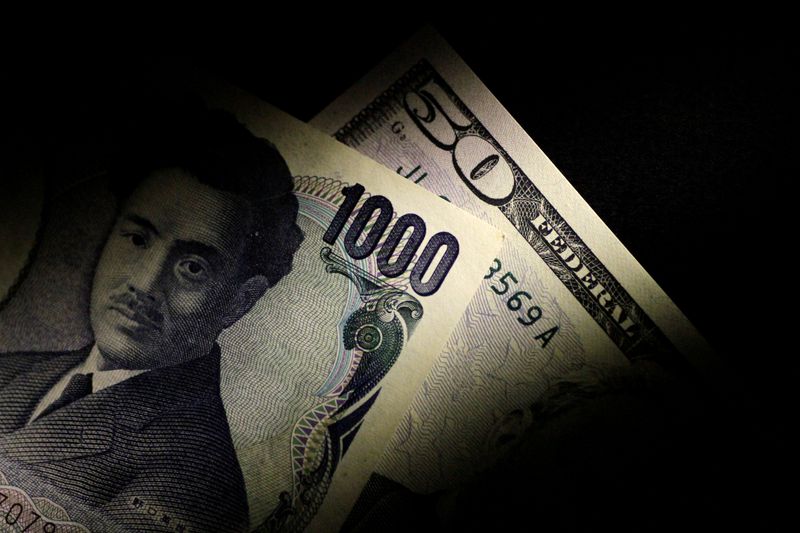
By Tom Westbrook
SINGAPORE (Reuters) -The dollar was supported by rising U.S. yields and the blowtorch was on low-yielding currencies on Tuesday such as China’s yuan and Japan’s yen, which was pinned to its lowest since 1986.
Benchmark 10-year Treasury yields rose nearly 14 basis points to 4.479% overnight, with analysts attributing the move to expectations of Donald Trump winning the U.S. presidency and raising tariffs and government borrowing. On Tuesday, it was last at 4.443% in Asian hours.
As the dollar rose, the euro handed back part of a small rally as the first round of France’s election turned out more or less in line with polling. The single currency was last 0.11% lower at $1.07287.
“Trump’s better (debate) showing over (President Joe) Biden added to expectations that inflation may pick up pace, yield curves will steepen further and that the USD may continue to trade at a premium,” said OCBC currency strategist Christopher Wong.
The yen sank to 161.745 per dollar on Tuesday, its weakest in nearly 38 years, extending a downward slide driven mainly by a wide gap in interest rates between the U.S. and Japan.
Japan’s finance minister said on Tuesday the authorities were vigilant to sharp currency market moves, but stopped short of giving a clear intervention warning.
The yen was also sinking on crosses as yen bears were wary that the dollar/yen pair was at risk of intervention by Japanese authorities.
Against the euro, the yen touched a lifetime low of 173.67 on Monday and was just shy of that level on Tuesday, while against the Australian dollar, the yen was near its lowest in 33 years as carry trade remained attractive.
“All eyes are now on Friday night’s U.S. non-farm payrolls report, with Japanese currency officials desperately hoping it shows signs of sharp labour market cooling to help ease the pressure on themselves and the battered yen,” said Tony Sycamore, market analyst at IG.
In bonds, at the 10-year tenor, the gap between U.S. and Japanese rates was 340 bps and almost 440 bps at the two-year tenor.
China’s yuan, which hit a seven-month low on the dollar last week and has hardly moved since, faces similar pressure with U.S. 10-year yields more than 220 bps higher than Chinese government bond yields.
Robust manufacturing data in China and an announcement from the central bank that it would be borrowing bonds – likely to sell them and steady falling yields, traders said – gave only the briefest fillip to the currency on Monday.
It was last at 7.3043 in offshore trade on Tuesday, within a whisker of its June trough. Its onshore counterpart, was 0.04% lower at 7.2712 to the dollar. [CNY/]
The dollar index, which measures the U.S. unit against six rivals, was at 105.93, with the spotlight on jobs opening data due later in the day and comments from Federal Reserve Chair Jerome Powell when he takes the stage at the ECB forum in Portugal.
The New Zealand dollar slipped 0.36% to $0.6053, testing support at its 200-day moving average. Sterling was down 0.14% at $1.2633.
The Australian dollar eased 0.3% to $0.66405 with traders weighing central bank minutes, which showed much discussion about whether policy was tight enough to ensure inflation would slow as desired. [AUD/]

Swaps markets pricing implies a one-in-three chance of a rate hike as soon as next month.
“We know they were talked about, the question is, what is the trigger,” said ING economist Rob Carnell. “We are leaning towards forecasting a hike at the August meeting.”
This post is originally published on INVESTING.


